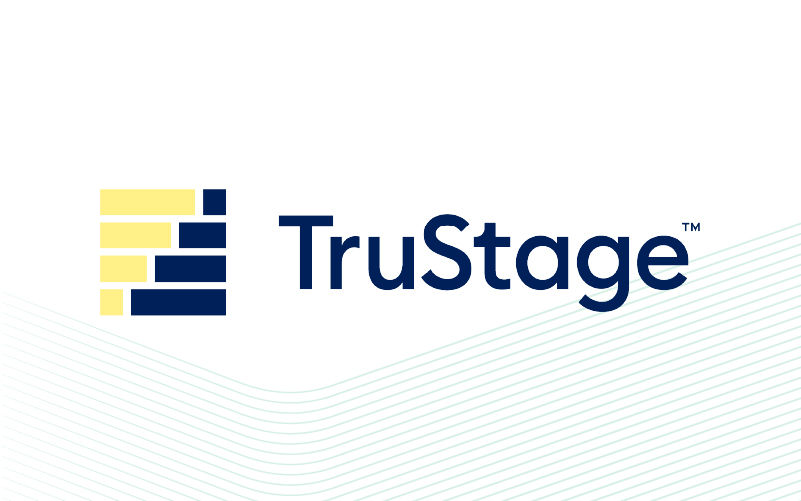2025 U.S. Economic Outlook and Its Potential Impact on Credit Unions
January 22, 2025

By Steve Rick, Chief Economist for TruStage
As we look ahead to 2025, the economic landscape presents a mixed but cautiously optimistic picture. Although overall growth is expected to be moderate, with a 2% gross domestic product (GDP) increase—slightly lower than the 2.4% growth this year—there are several key trends and economic factors to consider.
It should be noted that a change in presidential leadership could lead to economic shifts in 2025, driven by key policy decisions such as universal tariffs, immigration reform, tax cuts and deregulation. These policies could impact inflation, GDP and deficits, creating both opportunities for growth and challenges to economic stability.
Let’s explore the implications of inflation, interest rates, consumer behavior, and the labor market on the US economy and credit unions.
2025 inflation and interest rate predictions
The primary factor influencing the 2025 economic outlook is the persistence of high interest rates. Despite slight decreases, the Federal Reserve’s interest rates remain above the desired neutral level. These elevated rates will likely dampen economic growth, slowing overall activity to around 2% GDP growth in 2025. However, the higher rates are not expected to trigger a severe recession, as consumer spending remains resilient.
Inflationary pressures are expected to continue, though some relief may come through deregulation policies. Lowering regulatory burdens on small businesses could reduce costs, enhance productivity, and, over time, help curb inflation.
2025 Consumer Price Index (CPI) and real Gross Domestic Product (GDP) predictions
In terms of GDP, there’s a projected growth rate of 2% in 2025, slightly below this year’s 2.4%. This moderate growth aligns with long-term trends but reflects the restrictive impact of high interest rates. Consumer spending is expected to remain robust, supported by healthy debt-to-income ratios and rising real wages, which should continue to buoy confidence in the economy. However, high inflationary expectations and rising treasury yields will help keep pressure on consumer prices and economic activity.
Deregulation could play a key role in stimulating the economy by helping to reduce unnecessary compliance costs, particularly for small businesses. This, in turn, could help reduce inflationary pressures and increase overall productivity, leading to stronger GDP growth in the long run.
Unemployment and job market
The current unemployment rate stands at 4.1%, with part-time work on the rise while full-time job growth has plateaued. The tight labor market poses challenges for credit unions, particularly in relation to loan repayment. Many members face financial stress due to stagnant wages and high living costs, and part-time work may exacerbate this issue. Credit unions must stay alert to these trends and offer solutions that help accommodate the changing workforce.
Mortgage rates and housing market
The housing market is facing significant challenges, particularly due to rising mortgage rates. The 30-year mortgage rate has climbed to around 6.92%, and in some cases, even surpassed 7%. These increases have caused many potential homebuyers to adopt a wait-and-see approach, hoping for lower rates in the future.
This slowdown in housing activity could reduce mortgage loan growth, affecting credit unions’ lending volumes. However, with interest rates holding steady or continuing to rise, we may see further delays in housing transactions in the short term.
Impact on Credit Unions
Credit unions are facing a mixed outlook as they navigate the economic challenges of 2025. Loan growth is forecasted to reach around 6%, a slight rebound from this year’s 3%, but still below the long-run average of 7%. Higher interest rates will continue to limit lending activity, particularly for mortgages and personal loans. However, credit unions can help mitigate this by focusing on areas where they can provide more value, such as offering support to members dealing with financial strain.
Delinquencies and charge-offs are expected to remain a challenge, particularly with younger members struggling under the weight of high student debt and rising rent costs. Car insurance premiums, which have surged by 30%, are another strain, leading some members to reduce coverage and increasing the likelihood of repossessed vehicles being in poor condition. This trend could lead to more charge-offs for credit unions.
Supporting credit union members in 2025
To address these challenges, credit unions can explore various strategies to assist their members. Offering flexible loan products, such as payment programs for struggling borrowers, will be critical. Stay flexible in offering personalized solutions to members, helping them adjust to the changing job market and economic conditions.
Additionally, providing financial counseling services can help members manage their debt and make informed decisions. It will be important to support younger members, who are particularly vulnerable to financial stress, by offering tools to manage student debt and rising living costs.
The 2025 economic outlook suggests a year of moderate growth, tempered by high interest rates and inflationary pressures. While these challenges will certainly affect credit unions, there are opportunities for them to play a pivotal role in supporting their members. By offering flexible loan products, financial counseling, and proactive support programs, credit unions can help their members navigate these uncertain times.
To learn more about TruStage and the solutions they offer, connect with the GoWest Solutions Team today.
The views expressed here are those of the author(s) and do not necessarily represent the views of TruStage.
TruStage™ is the marketing name for TruStage Financial Group, Inc. its subsidiaries and affiliates. Corporate headquarters are located in Madison, Wis.
© TruStage
Posted in GoWest Solutions, Top Headlines.


















